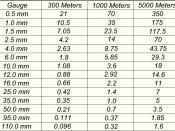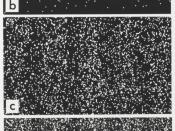Definition of resistance: A materials opposition to the flow of electric current.
Formula for resistance: Voltage (V) / Current (A) = resistance (â¦)
For my Physics course work I am going to investigate how resistance changes when different factors change. I will now describe the four factors which affect resistance, and out of these four factors I will choose one that I will investigate.
Factors which affect resistance:
- The length of a wire.
- The thickness of a wire.
- The material that the wire is made from.
- Temperature the wire is at.
The longer the length of the wire the greater the resistance it has; doubling the length of the wire will double its resistance. This is because the electrons have a longer journey to travel, and there is a higher chance of them colliding with atoms meaning there is higher resistance.
The thickness of the wire; the thicker the wire the less resistance it has.
This is because the wire has a lot of area, since it has so much area the electrons have less chance of colliding with atoms therefore less resistance.
The material the wire is made from; some materials have more free electrons than others, the more free electrons to carry the charge around the circuit the lower the resistance of the wire.
If you increase the temperature of a wire then you increase the resistance of the wire. At higher temperatures the atoms in the wire vibrate more aggressively meaning they obstruct the way of the electrons.
A current is a flow of charge, in metal wires the charge is carried by free electrons. Metals have many free electrons, which make them good conductors of electricity. Resistance is the materials opposition to the flow of current meaning like the atoms inside the...


